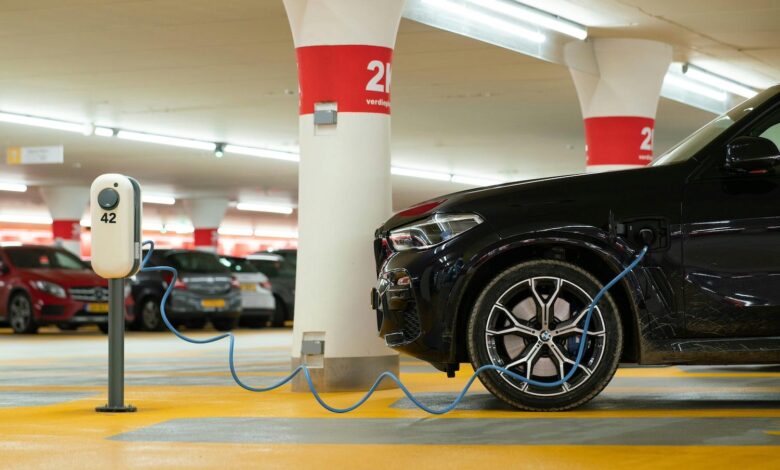How the U.S. Navy is Making Electric Vehicle Batteries Better

Lithium is the material of choice for most electric vehicle (EV) batteries due to its high energy density and fast-charging capability. Still, over-reliance on a single technology raises concerns over supply chain security, recycling challenges and environmental impacts. The United States Navy is assisting in the effort to shepherd alternative battery materials into the market, in collaboration with the U.S. zinc battery startup Enzinc.
The long journey to zinc EV batteries
Zinc is a relatively abundant, inexpensive material. It was used to create the first modern battery more than 200 years ago, and it is still commonly used in disposable batteries today. But applying zinc to EV batteries has been a centuries-long challenge. The first electric vehicles of the 19th and early 20th centuries typically used rechargeable lead-acid batteries until lithium-ion batteries emerged in the 21st century.
It was not for lack of trying. In the 1990s, for example, the aerospace and defense technology company Northrup Grumman attempted to develop a mini-submarine with zinc batteries for the U.S. Navy. The batteries failed to perform as expected, and they were replaced with lithium-ion batteries.
That didn’t pan out, either. After the Navy finally took possession of the first mini-sub in 2008, it was destroyed in a fire that started while its lithium-ion batteries were recharging.
That, in a nutshell, sums up the problem. Lithium-ion batteries are high-performing, but without proper handling, their flammable electrolyte is a fire hazard. Zinc batteries are non-flammable but their performance in the rechargeable area is limited.
Energy storage solutions are emerging
The development of effective battery management systems allowed for the safe, widespread use of lithium-ion batteries, though the National Fire Protection Association advises that misuse, damage or improper storage can still lead to fire hazards.
At the same time, zinc technology has also progressed. The U.S. Navy continues to focus on zinc as a non-flammable alternative to lithium-ion batteries, with the U.S. startup Enzinc as a partner.
In 2014 Enzinc received a $452,000 grant from the U.S. Department of Energy to collaborate with the U.S. Naval Research Laboratory on a project aimed at applying a new sponge-like structure to the anodes in zinc batteries. The grant was issued through the Energy Department’s Advanced Research Projects Agency-Energy (ARPA-E) office, which supports new high-risk, high-reward technologies.
“Current zinc-based batteries offer limited cycle life due to the formation of tree-like internal structures (dendrites) that can short out the battery,” according to ARPA-E. “Enzinc’s technology will enable zinc-based batteries that accept high-power charge and discharge as required by EVs. If successful, Enzinc’s zinc-anode technology would reduce EV battery cost by more than 50%, double the amount of energy stored, and allow for greater rechargeability.”
Scaling up zinc battery production
Enzinc credits the ARPA-E grant with enabling it to raise more than $8 million in private and public funding.
“Receiving ARPA-E’s RANGE grant enabled us to work with the U.S. Naval Research Laboratory to develop a revolutionary zinc microsponge anode that makes powerful, safe and sustainable batteries for vehicles, buildings and energy microgrids,” Michael Burz, Enzinc founder and CEO, said in an ARPA-E blog post.
Among the sustainability advantages cited by Burz is the potential for repurposing existing battery factories, rather than building new facilities.
Lead-acid, Nickel-Cadmium, and Nickel-Metal Hydride battery factories currently account for more than 400 gigawatt-hours of production capacity globally, and all three types can be upgraded to accommodate the new zinc battery, according to Enzinc.
Next steps for zinc batteries
The Energy Department has also provided financial support to other zinc battery innovators including the startup Eos, which specializes in stationary, long duration energy storage systems. Last fall, the Energy Department’s Loan Programs Office announced a conditional loan commitment of almost $400 million for Eos to manufacture its new zinc-bromine battery in bulk.
Activity is also stirring elsewhere around the world, with a funding assist from the trade organization Zinc Battery Initiative. Launched in 2020, the initiative is a branch of the International Zinc Association.
The zinc supply chain is more geographically diverse than lithium, and it is more abundant, and a relatively robust global zinc recycling industry is already in place, according to the initiative.
New research is also revealing additional pathways for cutting costs and expanding the application of zinc batteries.
In one recent example, a multinational research team based in China and the U.K. developed an inexpensive alternative to pricey platinum and ruthenium, which are normally needed for zinc-air batteries to charge and discharge efficiently.
Their study, published in the journal Nano Research Energy, supports the use of zinc-air technology to fabricate lightweight, wearable batteries. So far, the team has tested their new battery on small devices including a fan, an LED screen and a mobile phone.
While lithium will continue to exert considerable force in the energy storage market for the foreseeable future, innovations in zinc and other alternatives will help ensure that the battery industry overall can meet the needs of the global economy as energy demand rises and electrification replaces fossil fuels.



